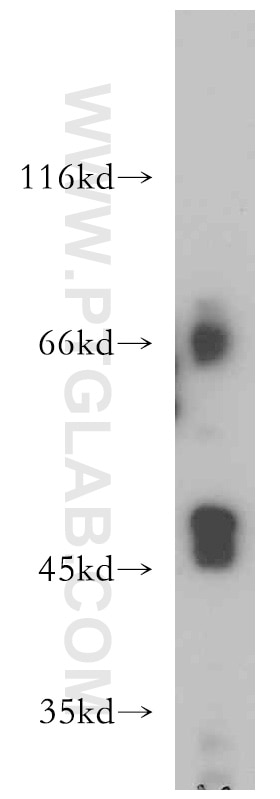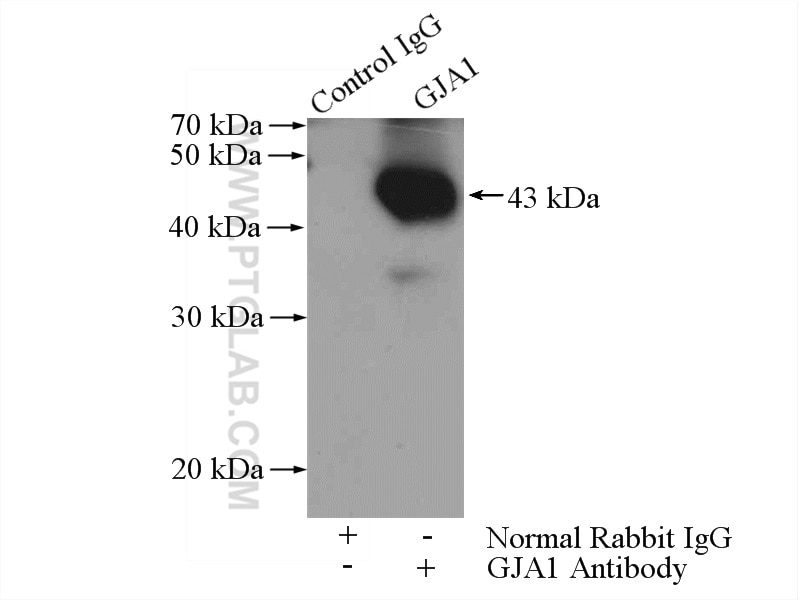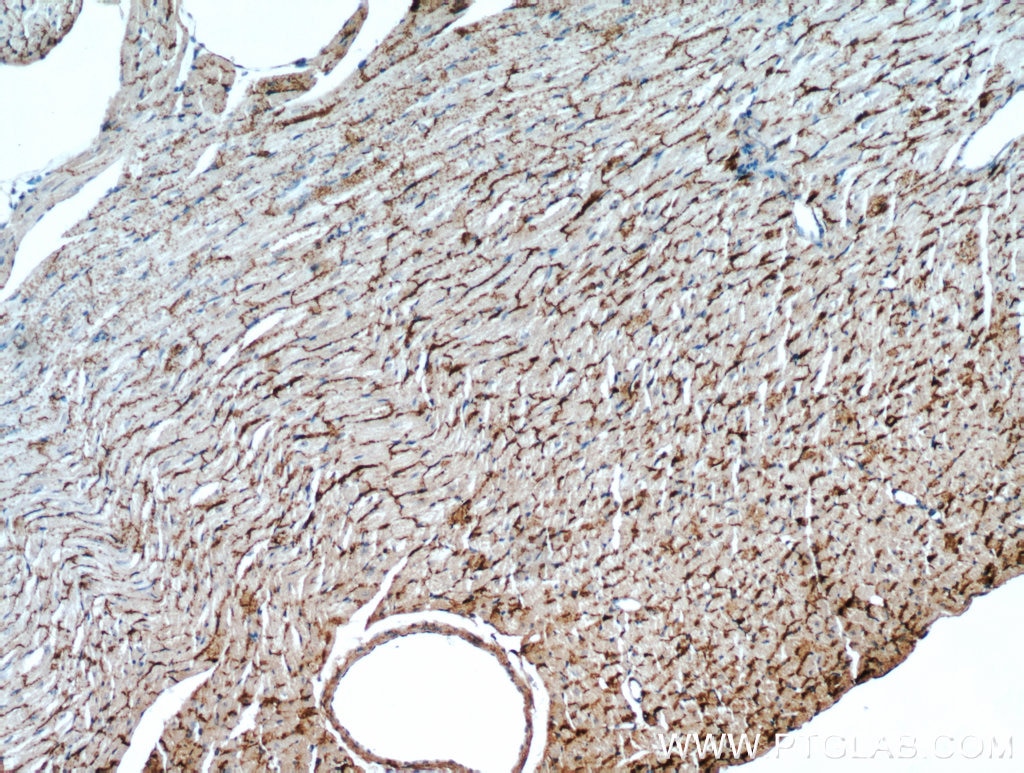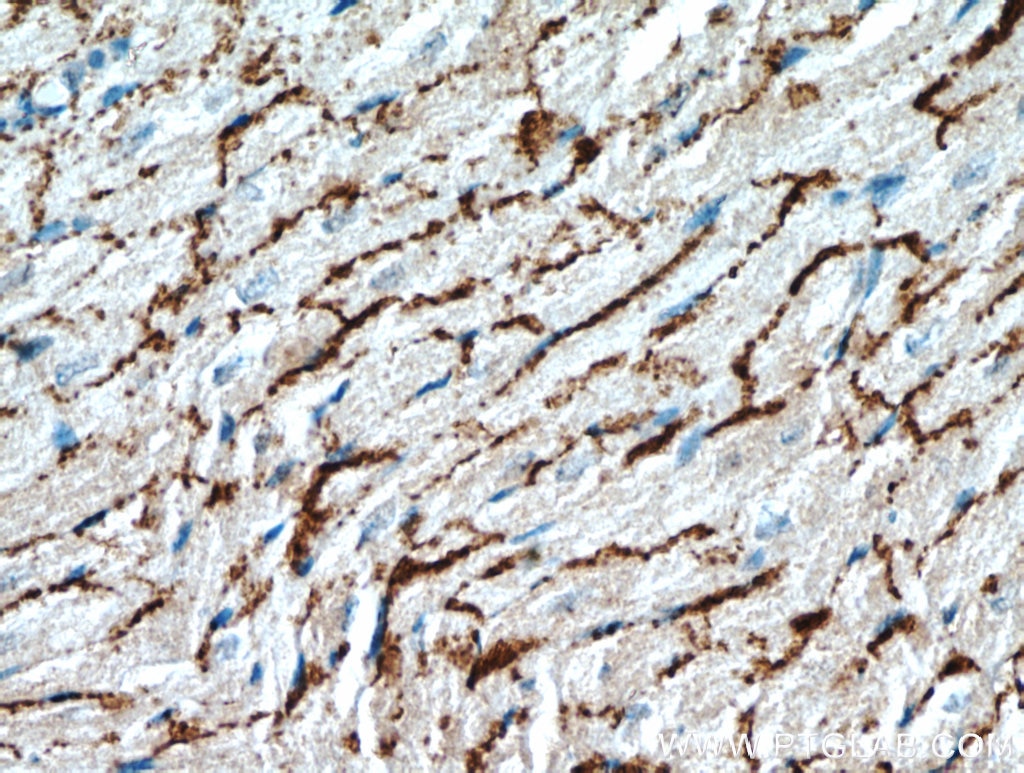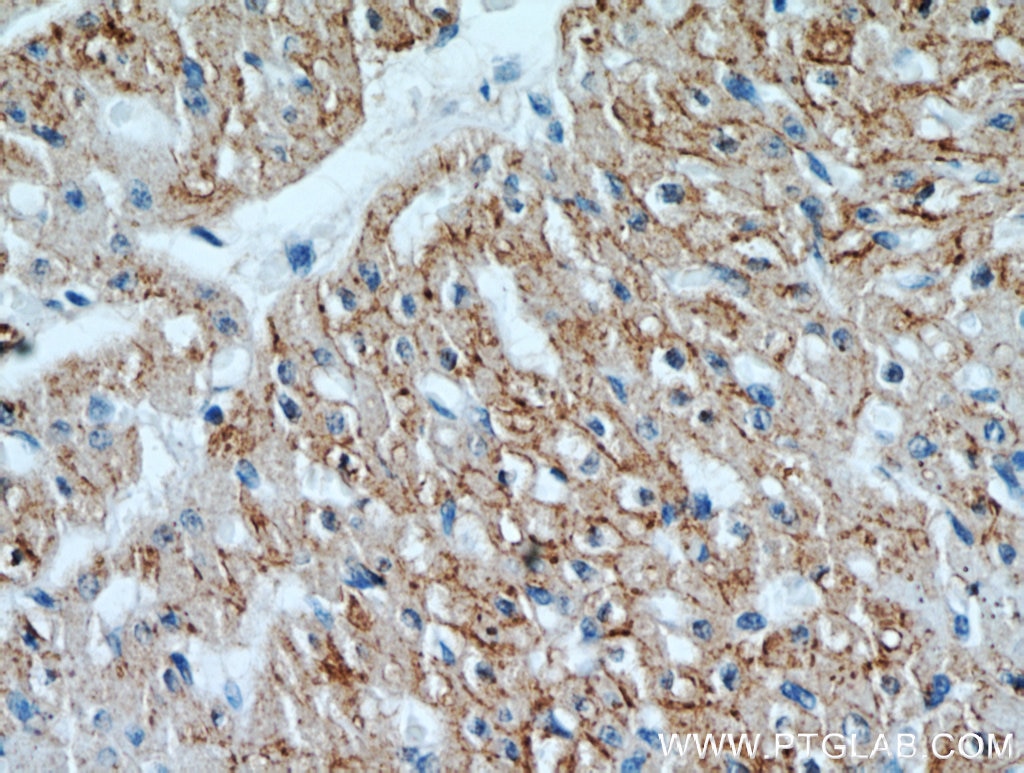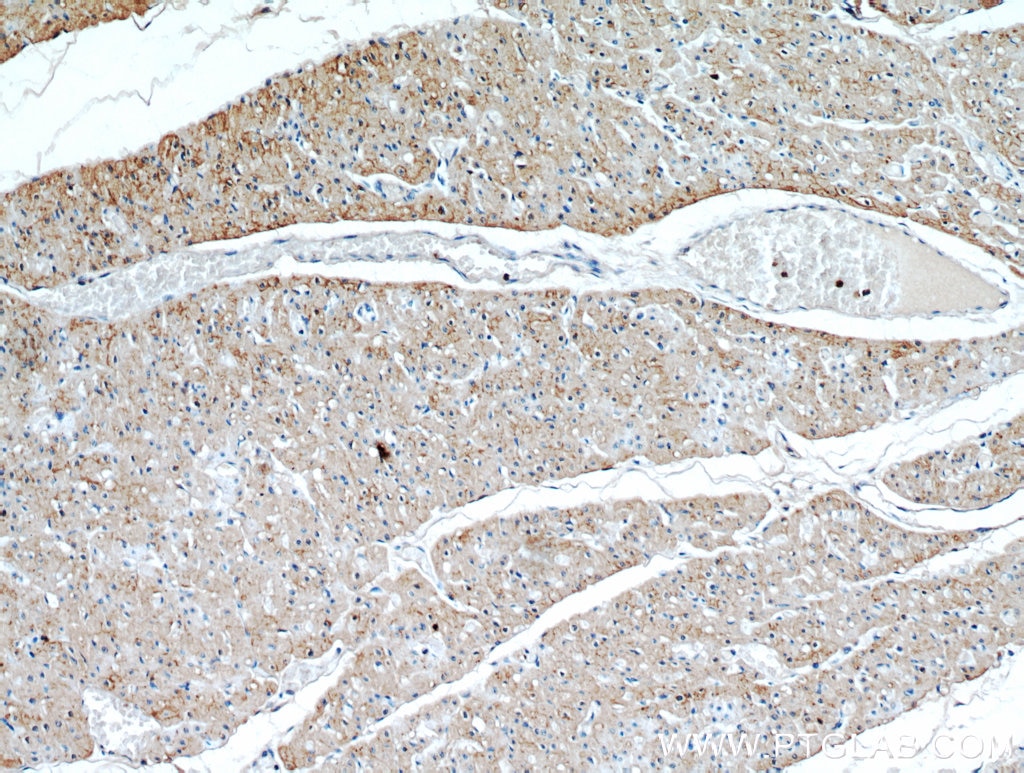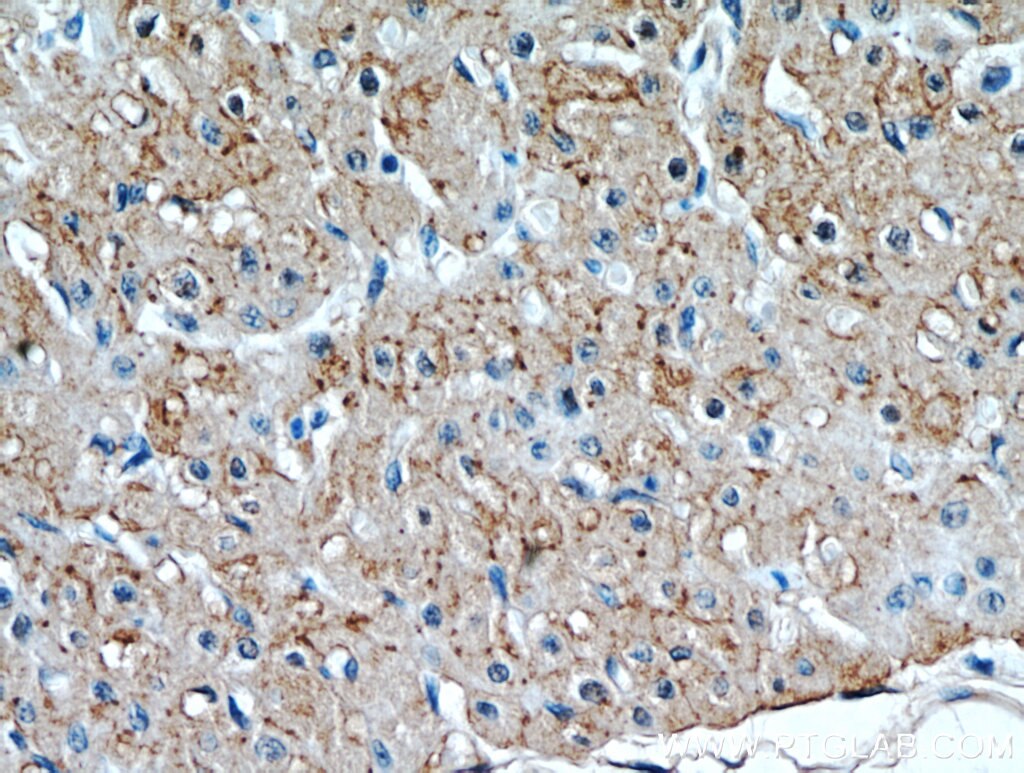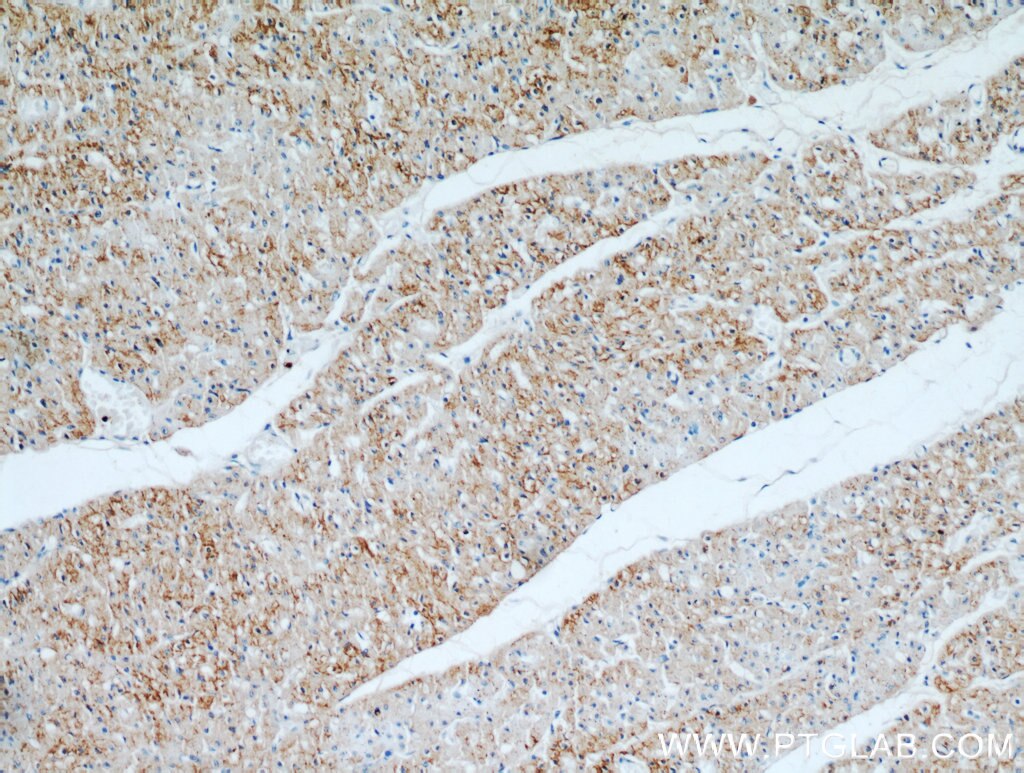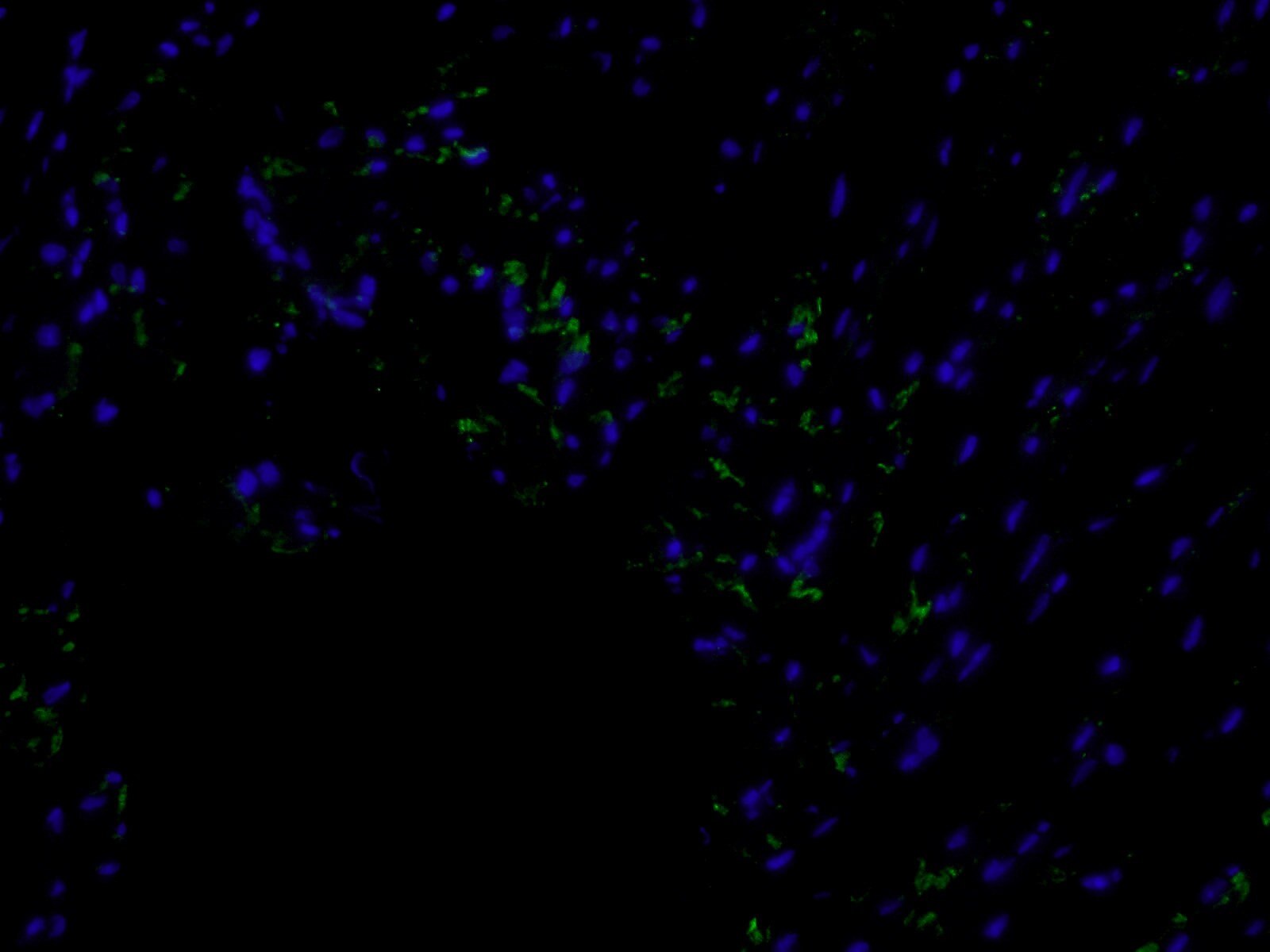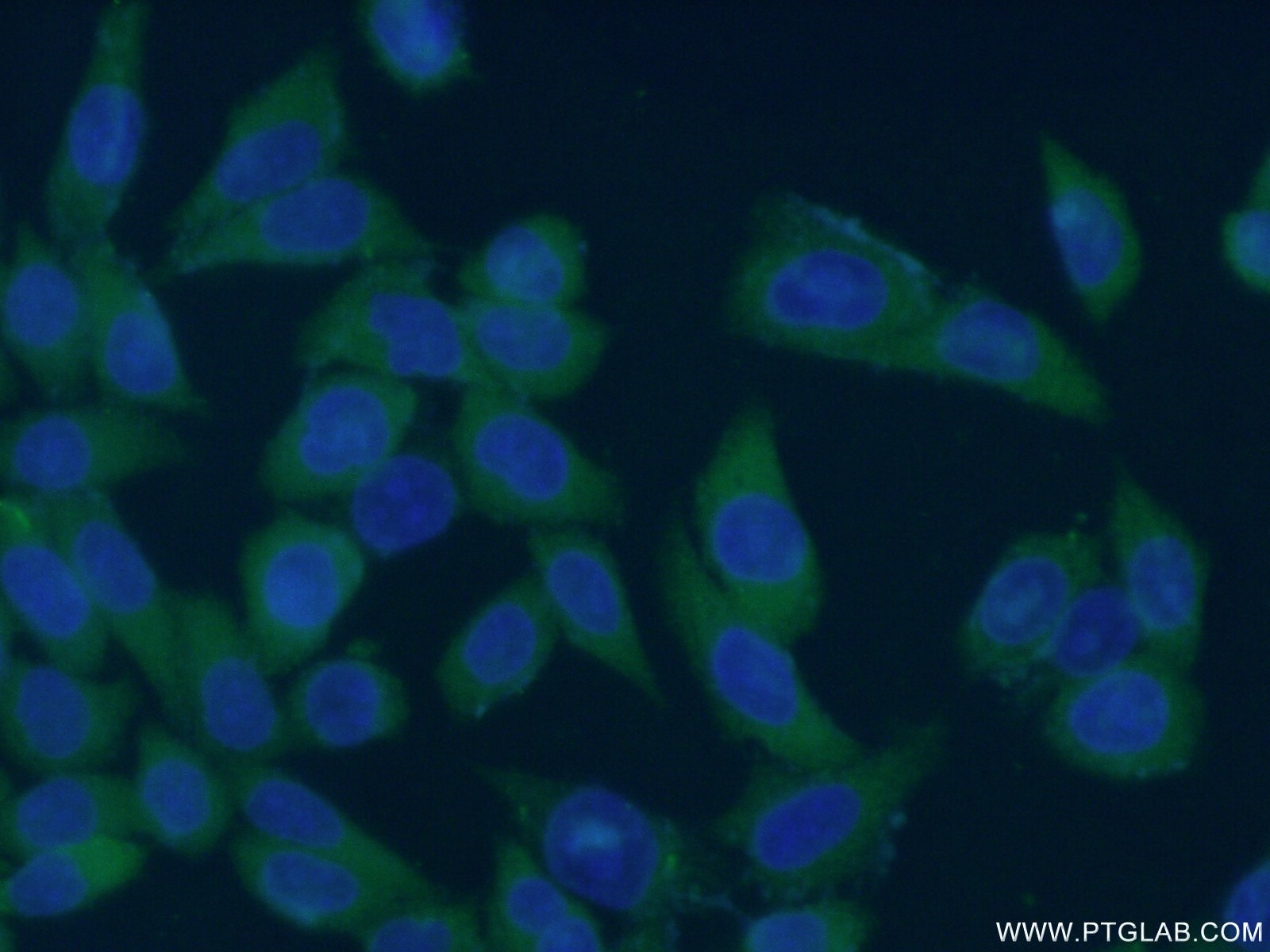Validation Data Gallery
Tested Applications
| Positive WB detected in | HeLa cells |
| Positive IP detected in | mouse heart tissue |
| Positive IHC detected in | mouse heart tissue, human heart tissue Note: suggested antigen retrieval with TE buffer pH 9.0; (*) Alternatively, antigen retrieval may be performed with citrate buffer pH 6.0 |
| Positive IF-P detected in | mouse heart tissue |
| Positive IF/ICC detected in | HeLa cells |
Recommended dilution
| Application | Dilution |
|---|---|
| Western Blot (WB) | WB : 1:500-1:2000 |
| Immunoprecipitation (IP) | IP : 0.5-4.0 ug for 1.0-3.0 mg of total protein lysate |
| Immunohistochemistry (IHC) | IHC : 1:50-1:200 |
| Immunofluorescence (IF)-P | IF-P : 1:50-1:500 |
| Immunofluorescence (IF)/ICC | IF/ICC : 1:50-1:500 |
| It is recommended that this reagent should be titrated in each testing system to obtain optimal results. | |
| Sample-dependent, Check data in validation data gallery. | |
Published Applications
| KD/KO | See 1 publications below |
| WB | See 18 publications below |
| IHC | See 4 publications below |
| IF | See 17 publications below |
| IP | See 2 publications below |
| CoIP | See 1 publications below |
Product Information
15386-1-AP targets Connexin-43 in WB, IHC, IF/ICC, IF-P, IP, CoIP, ELISA applications and shows reactivity with human, mouse, rat samples.
| Tested Reactivity | human, mouse, rat |
| Cited Reactivity | human, mouse, rat, bovine |
| Host / Isotype | Rabbit / IgG |
| Class | Polyclonal |
| Type | Antibody |
| Immunogen | Connexin-43 fusion protein Ag6698 相同性解析による交差性が予測される生物種 |
| Full Name | gap junction protein, alpha 1, 43kDa |
| Calculated molecular weight | 43 kDa |
| Observed molecular weight | 43-47 kDa |
| GenBank accession number | BC026329 |
| Gene Symbol | Connexin-43 |
| Gene ID (NCBI) | 2697 |
| Conjugate | Unconjugated |
| Form | Liquid |
| Purification Method | Antigen affinity purification |
| UNIPROT ID | P17302 |
| Storage Buffer | PBS with 0.02% sodium azide and 50% glycerol , pH 7.3 |
| Storage Conditions | Store at -20°C. Stable for one year after shipment. Aliquoting is unnecessary for -20oC storage. |
Background Information
Connexin-43 (Cx43, also known as gap junction alpha-1), a connexin family member, plays an essential role in gap junction communication that facilitates direct communication among adjacent cells (PMID: 12270943). Usually, six connexin proteins oligomerize into a hemi-channel or connexon during intercellular channel formation (PMID: 12270943). Mutations of Cx43 may cause a series of diseases such as oculodentodigital dysplasia (ODDD), syndactyly 3 (SDTY3), hypoplastic left heart syndrome 1 (HLHS1) and so on (PMID: 18161618, 1472936, 1147490).
Protocols
| Product Specific Protocols | |
|---|---|
| WB protocol for Connexin-43 antibody 15386-1-AP | Download protocol |
| IHC protocol for Connexin-43 antibody 15386-1-AP | Download protocol |
| IF protocol for Connexin-43 antibody 15386-1-AP | Download protocol |
| IP protocol for Connexin-43 antibody 15386-1-AP | Download protocol |
| Standard Protocols | |
|---|---|
| Click here to view our Standard Protocols |
Publications
| Species | Application | Title |
|---|---|---|
Nat Commun Single-cell analysis of murine fibroblasts identifies neonatal to adult switching that regulates cardiomyocyte maturation. | ||
Thromb Res Selective increase of cardiomyocyte derived extracellular vesicles after experimental myocardial infarction and functional effects on the endothelium. | ||
Hypertension Novel Role for the Immunoproteasome Subunit PSMB10 in Angiotensin II-Induced Atrial Fibrillation in Mice. | ||
Ecotoxicol Environ Saf Sodium Selenite inhibits mitophagy, downregulation and mislocalization of blood-testis barrier proteins of bovine Sertoli cell exposed to microcystin-leucine arginine (MC-LR) via TLR4/NF-kB and mitochondrial signaling pathways blockage. | ||
Environ Toxicol Pharmacol Microcystin-leucine arginine (MC-LR) induced inflammatory response in bovine sertoli cell via TLR4/NF-kB signaling pathway. | ||
Free Radic Biol Med Oxidative stress contributes to hepatocyte growth factor-dependent pro-senescence activity of ovarian cancer cells. |
